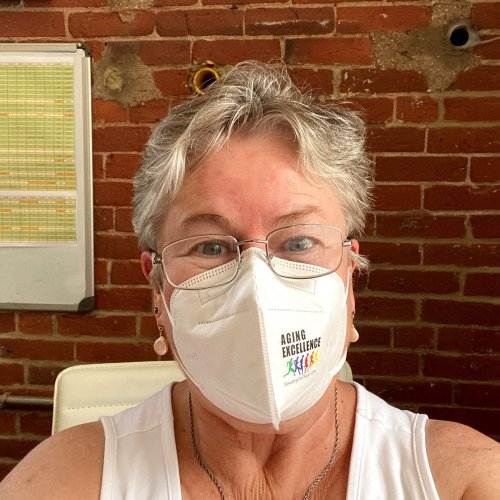December 18th, 2020
A Mask A Day Keeps Coronavirus Away...
By Linda Langley
A MASK A DAY KEEPS CORONA AT BAY
Here we are, nine months into the pandemic, and public health officials agree that one of our top tools for slowing the spread of the novel coronavirus is a face mask, covering the mouth and nose. Used properly, masks go a long way toward protecting you from virus being shed by others and protecting others from virus you may be shedding. To combat a virus that is easily transmitted by asymptomatic (or pre-symptomatic) people who don’t even know they have it, universal masking is a worthy goal.
But which mask is best? In recent months, manufacturers have responded to market demand, and there are dozens of options to choose from. Which one should YOU wear?
Fit and Filtering
Choosing the best mask boils down to two questions: (1) How well does it fit? and (2) How well does it filter? Both of these criteria need to be met for a mask to be effective. If your mask has a high filtering capacity, but doesn’t fit well or is so hard to breathe through that it causes you distress, it’s the wrong choice. If a mask fits comfortably, but has very low filtering capacity, it may scarcely be worth the effort.
An effective face mask should fit well enough that all (or almost all) of the air entering or leaving your nose and mouth goes through the mask, not through gaps between the mask and your skin. The current goal for filter capacity appears to be screening out at least 95% of particles 0.3 microns or larger in size.
The Options…and a Surprise!
First of all: masks with integrated valves often have a high filter capacity for the air coming in, but not for what you exhale. They only solve half the problem, so they are not recommended.
Inexpensive disposable face masks tend to leave gaps around the nose and cheeks, and offer protection only against particles measuring 3.0 microns or greater—ten times the size desired. Even Level 3 surgical masks suffer from these filter and fit deficiencies.
N95 (or the Chinese equivalent KN95) masks meet the filter capacity goal of 0.3 microns, and often meet the fit goal as well. They can, however, be difficult to find—public health officials routinely urge that they should be reserved for the use of front-line health-care workers. Also: many of us find that when they do fit properly, they can be difficult to breathe through.
This leaves us with cloth masks, and here there is good news! Recent studies indicate that certain cloth mask configurations may be as effective as N95 masks. They tend to be more expensive, but they are generally more available, more comfortable to wear, and they are washable and reusable. They can even be downright stylish!
What to Look for in a Cloth Mask
When choosing a cloth mask, thread count and layering are key!
A single-layer fabric mask, such as a bandana or a gaiter, is unlikely to filter sufficiently. (Do the candle test: can you blow out a candle—or make it sputter—while wearing that mask? Don’t use it!)
A mask made of two layers of high-thread-count fabric is far superior—and is further improved if a non-woven filter is inserted between them. Readily available disposable PM 2.5 filters, for example, screen out at least 90% of particles measuring 2.5 microns or greater, and they operate both as a mechanical barrier (due to being a non-woven material) and an electrostatic barrier.
Finally, some cloth masks sandwich two cloth layers around an integrated, washable polypropylene filter meeting the filter capacity standard of 0.3 microns, and feature a wire or a separate flap to fit snugly around the nose. This also helps prevent fogging, for those who wear glasses.
A short video comparing the different types of masks can be found Click Here.
So, go on out there, find your favorite mask(s), and let’s all keep each other healthy!



